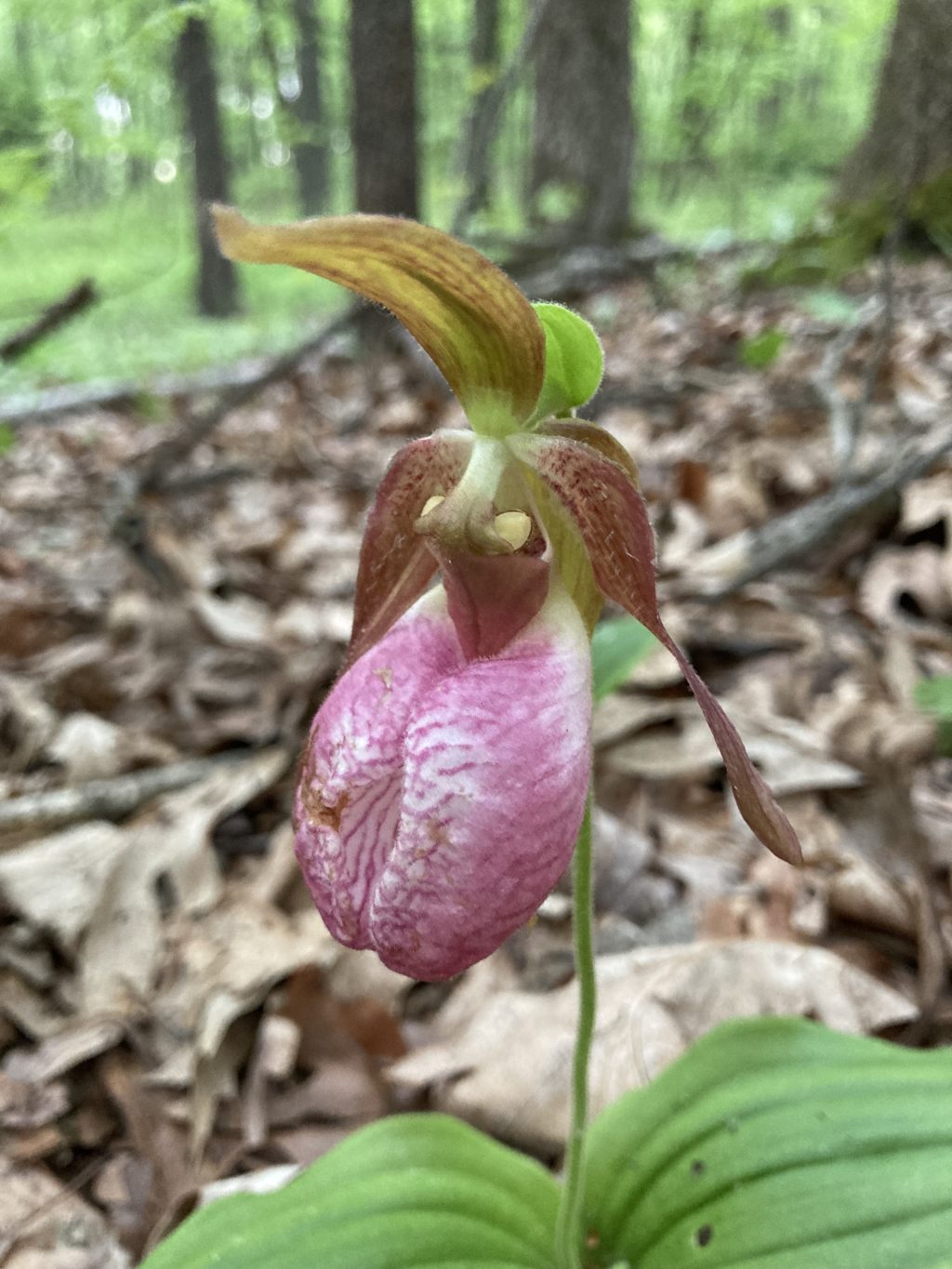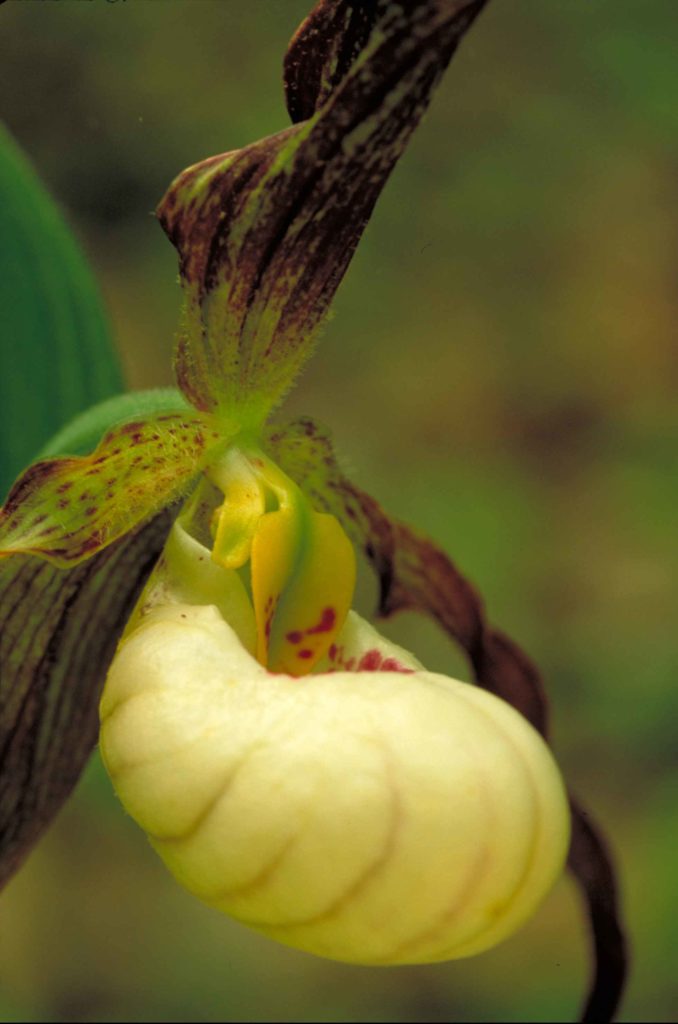Almanac: Forest Orchids

The complex beauty of a Pink Lady’s Slipper orchid. Photo: Stephen Braun
One of our area’s showiest wildflowers is blooming these days: the Pink Lady’s Slipper orchid. Although orchids are usually associated with the tropics, more than 50 orchid species are native to New England, many of them favoring wet, boggy areas. Most of these, however, are relatively diminutive. Lady’s Slipper orchids are anything but. On a hike with a friend this week we found dozens along the trails in the Mt. Warner reservation.
Lady’s slippers (also called Moccasin Flower) favor acidic soils in forests of mixed hardwoods and conifers. Their color varies from nearly white to a deep pink. The “slipper” part of the flower is actually a highly-modified single petal. The other two petals are shaped like slightly curly ribbons on either side of the slipper. The “slipper” has a very mild scent, which, combined with the color and shape of the flower, attract bees of several species.
The prominent pink veins on the “slipper” help direct the bees to the slit-like entrance at its front. Bees climb through the opening down to the base of the pouch where they hope to find nectar. There is no nectar, however, just pollen—the flower is a clever trap. The entrance to the flower is one way: the edges are curved inward, making exit difficult. The only way out is through the small opening near the base of the flower were the pistil and stamens are.
In its exertions to escape, the probably-frustrated bee may transfer pollen picked up on a previous visit to a different orchid, to the pistil located by the exit portal, thus cross-pollinating the plant and increasing the genetic diversity of the population. How many times a bee would be fooled by the Lady’s charms is not known, but it would only have to happen twice per bee for the gene pool of the species to be kept healthy.
If pollination is successful, a fruit capsule develops containing thousands of dust-like seeds. Most of these never produce a mature plant because germination and growth depend on a chance encounter with a soil fungus of the genus Rhizoctonia. The symbiosis is necessary for viability and it’s one reason it’s difficult-to-impossible to transplant Lady’s Slippers to your garden.
Much less common than the Pink Lady’s Slippers are the closely-related Yellow Lady’s Slipper orchids.

Yellow Lady’s Slippers are listed as “extremely rare” in Massachusetts, which explains why I’ve yet to come across them. I’d be interested to know if any readers have encountered them. No need to reveal the location—happy to leave them alone—but I’d like to know if they’re anywhere to be found in this area. Lady’s Slippers flowers of either species don’t last long, so if you can get out into the woods this long Memorial Day weekend, seize the chance!
Almanac is a regular Indy column of observations, musings, and occasional harangues related to the woods, waters, mountains, and skies of the Pioneer Valley. Please feel free to comment on posts and add your own experiences or observations.

1 thought on “Almanac: Forest Orchids”